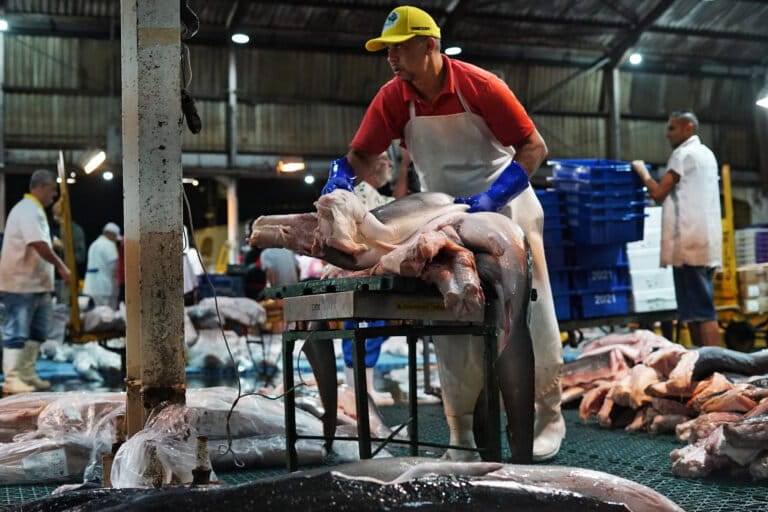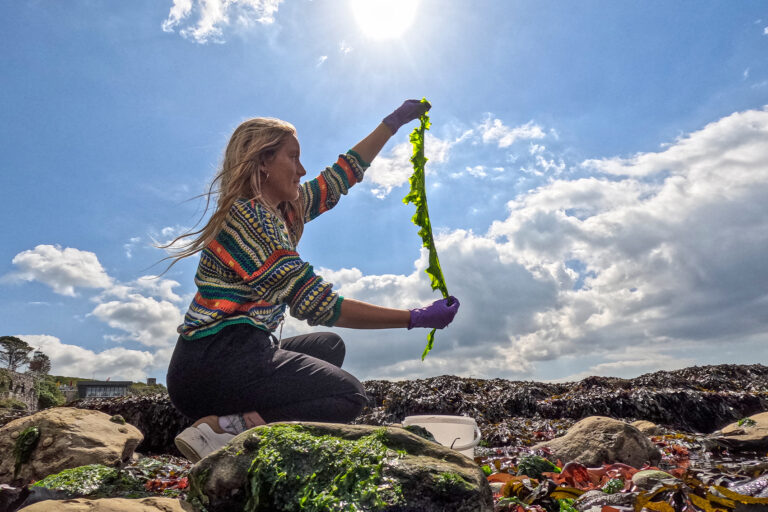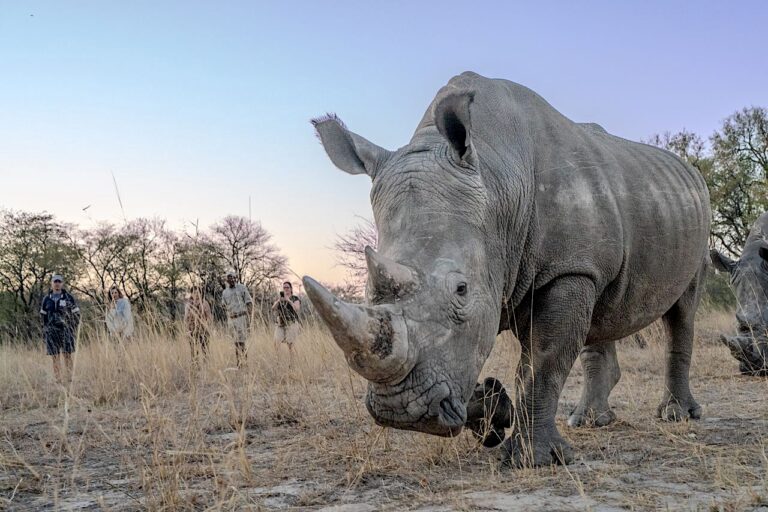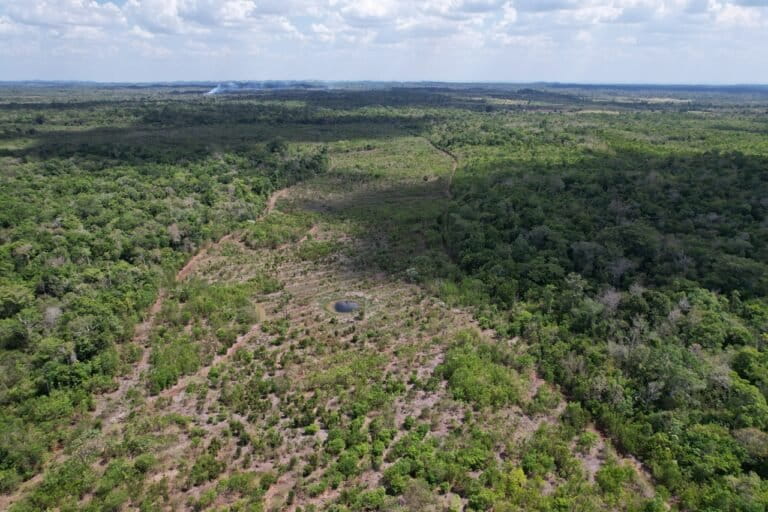- In the Kyrgyz mountain town of Kyzyl-Unkur, farmers grow mixed forests of walnut, apple, apricot, pear, almond and cherry trees in a traditional system of agroforestry that stretches back centuries.
- Beneath the fruit and nut trees, honey from beehives and mushrooms are collected, and hay is mown for livestock, providing multiple products for sale and consumption during the seasons.
- Kyrgyzstan currently has numerous environmental challenges such as land, forest and pasture degradation, which agroforestry could alleviate.
- Agroforestry also sequesters atmospheric carbon in trees and soil, and provides habitat for wild creatures.
KYZL-UNKUR, Jalalabad region, Kyrgyzstan — The mountain road leading to Kyzyl-Unkur winds through a gorge. Three hours later, on a broken road, one finds the village surrounded on all sides by unique relict walnut forests. Here, the local Kyrgyz population lives from generation to generation.
Everyone knows each other and who does what. Because of its remoteness from large settlements, a traditional way of life has been preserved here. All the inhabitants are farmers, engaged in raising livestock and growing crops. The total forest area of Kyzyl-Unkur is 520 square kilometers (200 square miles), of which 225 square kilometers (87 square miles) are forested and the rest pasture. The walnut forests alone cover 37 square kilometers (14 square miles).
But a recent sharp increase in livestock numbers has taken a heavy toll on the pastures, causing land degradation and a decrease in the productivity of the vegetative cover. Because of this, the cattle have begun to enter the forests and impact the ecosystem.

The villagers have begun to change their stance on this practice, though, trying not to move the cattle into the forest and looking at the forests from a different angle: not as a free source of fuel and grazing pasture, but rather from the angle of agroforestry.
Historical arc of agroforestry
At the heart of agroforestry is the growing of different crops in a particular spot all together: fruit trees, shrubs and vegetables that yield produce at different times in summer and autumn. The Kyzyl-Unkur farmers together with the regional forestry department benefit from forests through agroforestry. The practice also benefits the ecosystem. They all pursue one goal: to preserve natural areas of forest and increase the area of forests through agroforestry.
“Kyrgyzstan since ancient times is well known with its nomadic culture and livelihoods primarily based on livestock production,” said Klara Dzhakypbekova, coordinator of the SUSWALFOOD Research Project, a program of the Rhine-Waal University of Applied Sciences in Germany focused on the development of nutritious food from wild plant species from Kyrgyz walnut forest ecosystems. “The first ideas of using agroforestry came with the Persian garden culture across the Silk Road, and more profoundly developed later with Russian gardeners coming to the areas to develop fruit tree gardening techniques.”
Sartbaev Abdykerim, a forestry technician at the local forestry department, described what agroforestry represented when Kyrgyzstan was later part of the Soviet Union: “Under the Soviet Union, a planned system of work was in place. All lands belonged to the state forest fund, the main purpose of which was the conservation of biodiversity and protection of forest ecosystems,” he said.

“Work began on the development of new varieties of apple trees from wild [stock], creating large gardens. The local population was attracted to harvest walnuts, apples, medicinal herbs like St. John’s wort (Hypericum perforatum), nettle (Urtica urens), mint (Mentha piperita), yarrow (Achillea millefolium), immortelle (Helichrysum arenarium), chamomile (Matricaria chamomilla), and oregano (Origanum vulgare),” Abdykerim said. For this, he added, they received money or coupons for the purchase of goods in the grocery store.
“It was tight control from the state. The forestry department [owned] farm horses, apiaries, nurseries. Foresters planted wild apple trees in the forests, and in open areas created industrial plantations, planted potatoes, [and] clover was planted among the forest and haymaking was carried out in the forests,” Abdykerim said. “After the collapse of the Soviet Union, the amount of funding from the state budget fell sharply. Forestry [department] was forced to lease forests to the public due to a lack of budget for harvesting walnuts.”

After reform of the state system of forest management, the forestry department, or leshoz, began to introduce community management of forests. But only 10 percent of farmers agreed to do it this way. Those who did were provided with a plot of fruit-bearing forest in exchange for services like growing seedlings and collecting seeds.
But since 2007, Abdykerim said, the method of community management has been simplified: “Now the plots are leased, one hectare for 1,000 soms,” or about $15. A single hectare (2.5 acres) can yield up to 500 kilograms (1,100 pounds) of walnuts, which can bring a profit of up to $1,000.
Such plots can be rented for five to 50 years on a competitive basis. Each farmer proposes a program for the protection of the site, the planting of forests, and the use of resources. A selection committee with representatives from the local government, civil society and leshoz then picks the most original programs with good ideas.
The foresters make a list of all the crops on rented plots and note exact amounts. The sites fall under the control of forest rangers, who regularly visit them. If the terms of the contract are violated, the leshoz has the right to terminate the contract. For its part, the leshoz plants 30 hectares (74 acres) of industrial-sized plantations in open areas, annually growing 25,000 seedlings of various kinds.
Seasonal harvests
The farmers derive their income from the harvesting of walnuts (Juglans regia), morel mushrooms (Morchella esculenta), apples (Malus sp.), honey and hay. In early spring, they start picking morel mushrooms, which grow mainly under walnut trees. In the summer, they can reap one or two harvests of honey. In September, farmers collect one harvest of walnuts and apples as they mature, while hay for livestock is mown twice. Crops are sold as needed in the local market or to resellers. Walnuts and mushrooms typically go to China and Turkey, and honey to the domestic market.

Bakirov Erkinbek, a farmer, rented a forest plot in 2016, a high-altitude site of 5 hectares (12 acres) where he collects nuts. He takes care of the plot by cleaning the springs and collecting the eggs of gypsy moths (Lymantria dispar), an insect that feeds on the leaves of apple and walnut trees. Among the bushes he plants walnut seedlings; here there is a greater probability that animals will not trample the seedlings, and so they can grow to maturity.
Erkinbek tends a second plot, lower down the mountains, near the edge of the forest. Here he practices agroforestry through another approach, planting walnut, apple, apricot, pear, almond, cherry and dog rose (Rosa canina) seedlings. Next to the cultured breeds he planted wild seedlings. If one of the seedlings dies, another will continue to grow. In two years, 90 percent of the seedlings took root. Between the rows there’s the natural hay of wild grasses, as well as planted clover and potatoes.
“Mixing different cultures pays,” Erkinbek said. “We have a sharp continental climate here, so the weather is unpredictable every year. And this directly affects the yield. In good years I get an excellent harvest of nuts, apples, mushrooms. It is profitable for me to deal with agroforestry. And I hope gradually I will be able to give up livestock and get the main income from agroforestry.”
It’s very possible, according to agroforestry expert Dzhakypbekova. She said research had shown positive effects from agroforestry on household incomes, as well as on the ecological conditions of the land.

“Kyrgyzstan is currently encountering a number of environmental challenges such as land, forest and pasture degradation,” she said. “Agroforestry might be a sustainable option to find a resolution for such issues and to improve the well-being of the rural households.
“It is possible to develop agroforestry practices which are relevant to the given conditions and would be accepted by the local farmers,” Dzhakypbekova added. “For instance, degraded pasture plots might be planted with fruit trees and forage intercropped to meet the increasing demand for forage.”
In such ways, agroforestry could be a significant part of the country’s agricultural future, as it has been in the past.
This article is part of an ongoing series on agroforestry worldwide, see all the features here.
FEEDBACK: Use this form to send a message to the author of this post.













